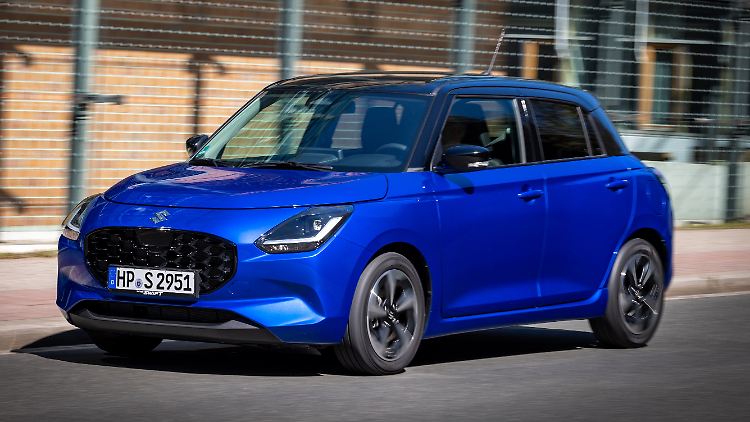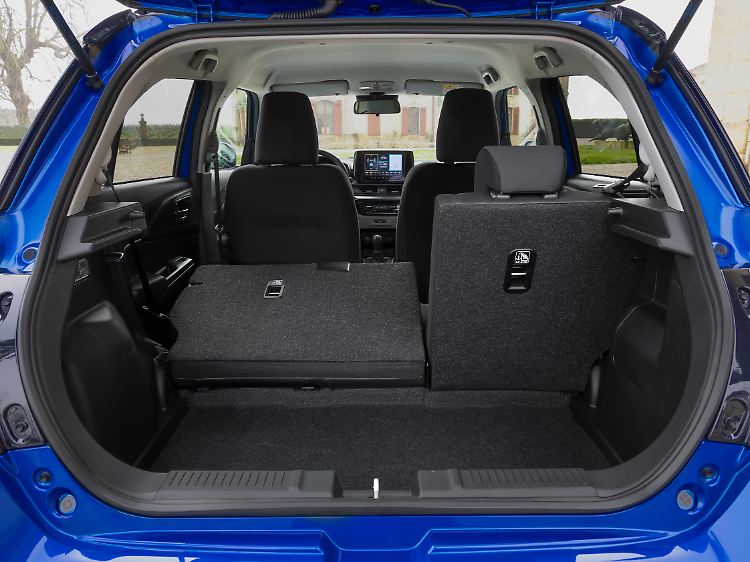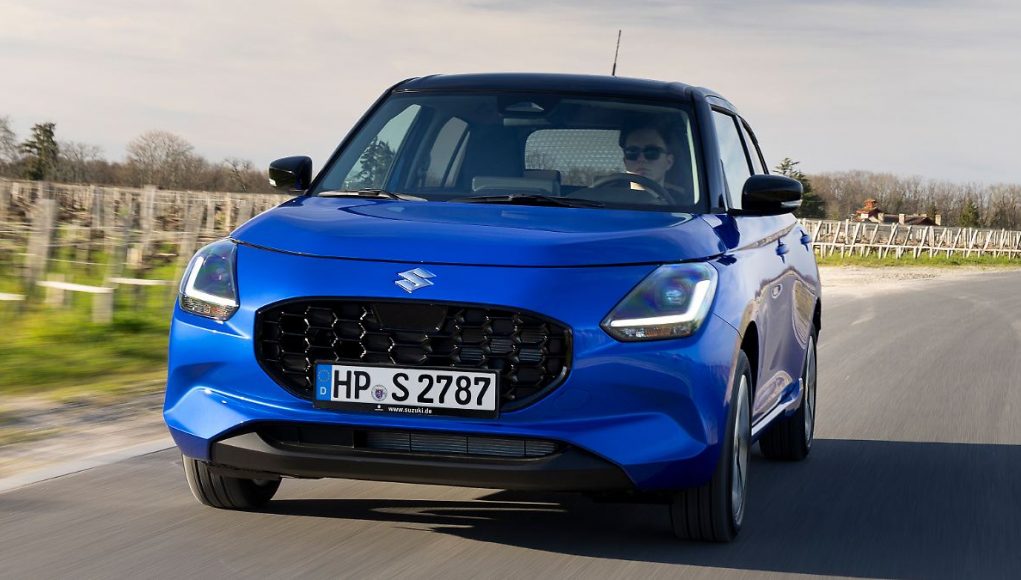Generation 7 in the test
Suzuki Swift – conservative, traditional, like in the old days
This audio version was artificially generated. More info | Send feedback
At first glance, the Suzuki Swift looks a bit old-fashioned. At second glance, that's exactly what makes it so charming. It's very similar to its predecessors – but the price is rising, although the basic version remains below the 20,000 euro threshold.
Small, light, agile – the Suzuki Swift has a few advantages that are rare these days. However, it pays for this with a somewhat less refreshing conservatism in other areas. You could also call it a sense of tradition: the current 7th generation of the small car looks almost exactly like the 6th and 5th editions. And the design has also evolved in a more evolutionary way compared to the Swift 4.


The Suzuki Swift has become a little fuller.
(Photo: Suzuki)
The five-door hatchback now looks a little bigger, but at 3.86 meters it is still as maneuverable as its two direct predecessors. You shouldn't expect a lot of space, especially in the back seat or in the luggage compartment. However, people of normal height can easily find their way around the two front seats.
Sober and clear interior
What applies to the body design ultimately also applies to the interior. While competitors are now relying on large screens and colorful gimmicks even in the small class, the Suzuki remains fairly sober. One of the few concessions to current trends is the attached infotainment screen, otherwise the controls are operated as usual, mainly via classic switches. This is good for ergonomics and clarity, but does not necessarily look homely.


The Suzuki Swift can still mostly be operated via classic switches.
(Photo: Suzuki)
The hard plastic surfaces on the doors and dashboard reinforce this impression. The front seats are rather simple, but offer sufficient comfort even on longer journeys; the short, high seats in the back are less comfortable.
Drive range slightly smaller
One of the Swift's previous advantages was the wide range of engines, which also included all-wheel drive and sports variants. This has shrunk somewhat in the current generation: the only engine is a 1.2-litre three-cylinder petrol engine with very mild hybrid support, which can be combined with either front-wheel or all-wheel drive and does its job amazingly well. Especially when it comes to efficiency: values of around 5 litres are no problem.


At 3.86 metres long, the 7th generation Suzuki Swift is as manageable as its two predecessors.
(Photo: Suzuki)
Noise and vibrations are OK, at least in the middle speed range. And acceleration and acceleration at medium speeds are also good. If you quickly change gears on the manual five-speed transmission (a continuously variable automatic is available as an option), the lightweight Swift (1070 kg) gets up to speed quickly at the traffic lights and is not a natural traffic hazard on country roads either.
Modest driving performance
Overall, however, the performance remains modest and is of course of interest primarily for city traffic: it takes just under 13 seconds to go from a standstill to 100 km/h, and the maximum speed is 165 km/h. The nimble Japanese car with manual transmission is a lot of fun and lives up to its name, at least subjectively for the driver. The chassis is designed to be more comfortable than sporty, but still offers decent comfort on bad city roads.


The trunk of the Suzuki Swift can hold a minimum of 265 and a maximum of 980 liters.
(Photo: Suzuki)
At 18,900 euros, the current Swift's base model is just under the 20,000 euro threshold, which some of its predecessors were able to undercut even with full equipment and the most expensive drive. Nevertheless, the Japanese model remains one of the cheapest representatives in its class, especially when you take into account the good safety equipment that comes as standard. For an additional 1,500 euros, you can get the next equipment line up, which, in addition to a few small comfort extras, represents a visual upgrade. If only because light alloy wheels replace the steel wheels.
There are certainly more modern small cars than the Suzuki Swift. But if you like things classic, the five-door model is a lively companion for life in the city and beyond, and it's also reasonably cheap. The Japanese car could be of interest not least to regular buyers of the now-discontinued Ford Fiesta. It may not be quite as dynamic as the Cologne model, but it also offers a lot of driving fun for this class.
Technical data – Suzuki Swift
- Five-door small car
- Length: 3.86 m, width: 1.74 m (without exterior mirrors), height: 1.49 meters. Wheelbase: 2.45 m, trunk volume: 265-980 liters
- 1.2-litre three-cylinder petrol engine, 61 kW/82 hp, maximum torque 112 Nm, 12-volt mild hybrid system with integrated starter generator. Front-wheel drive, five-speed manual transmission
- 0-100 km/h 12.5 s, Vmax: 165 km/h, consumption (WLTP combined): 4.4 l/100 km, CO2 emissions: 99 g/km, test consumption: 5.2 l/100 km
- Price: from 18,900 euros































